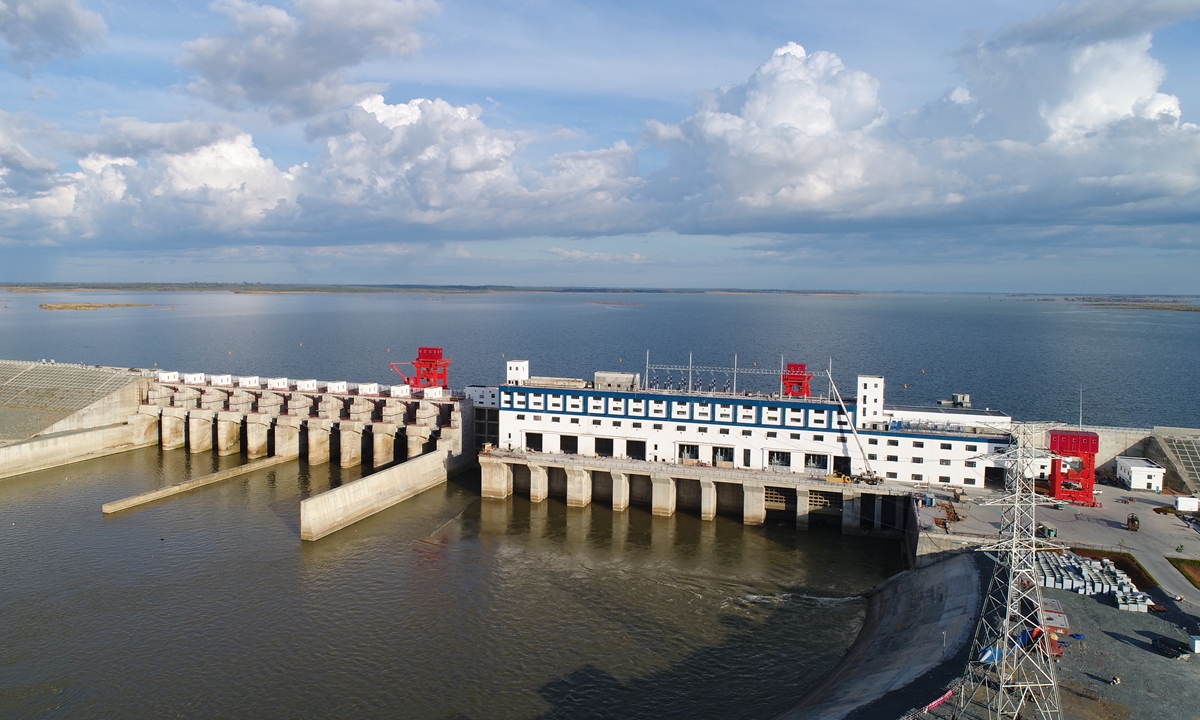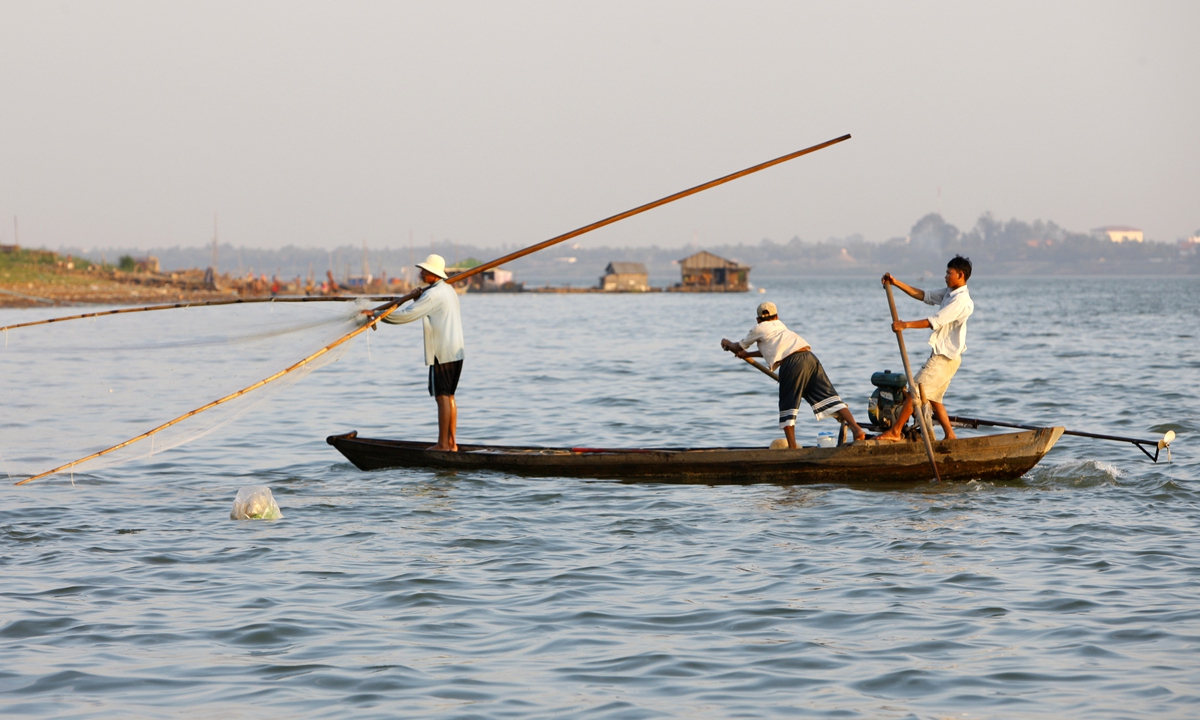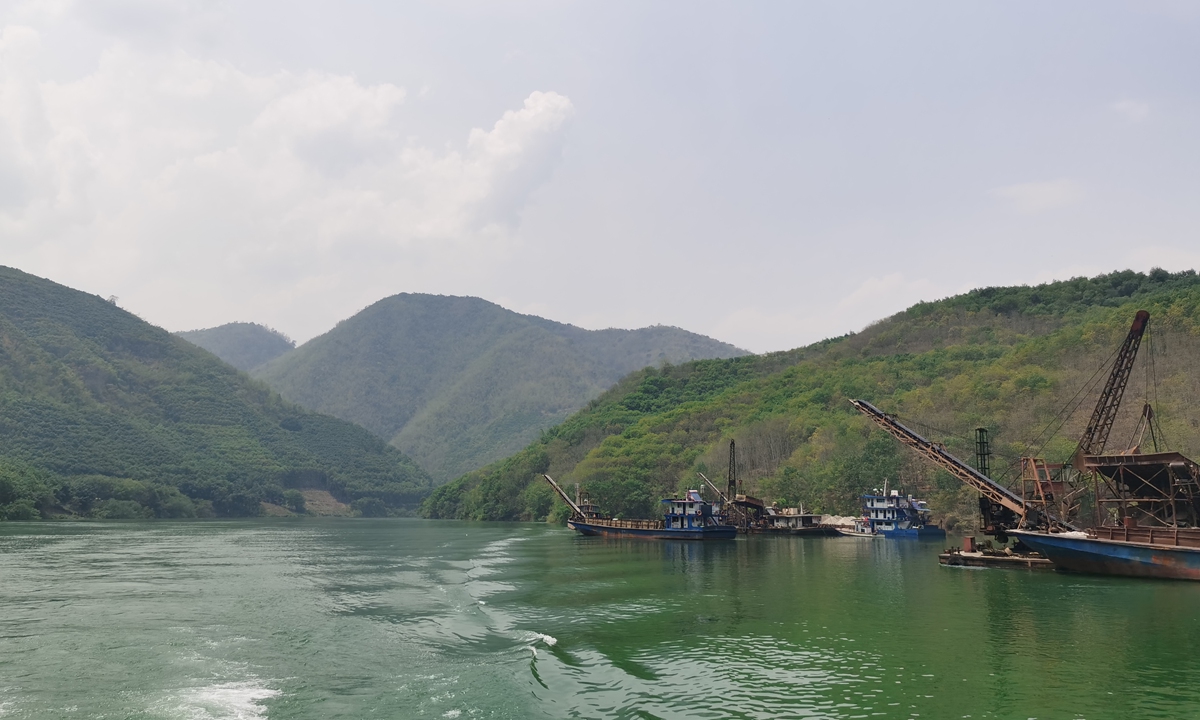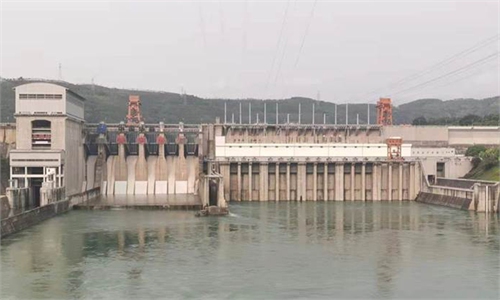IN-DEPTH / IN-DEPTH
Downstream Mekong project success proves China’s commitment to improving livelihoods, boosting hydropower capacity in Mekong region
Dam of cooperation

Lower Sesan II hydroelectric power station Photo: Huaneng Lancang River Hydropower Inc
After an in-person visit to China's reservoir and learning dam-building skills, the Mekong River envoys relay how infrastructure projects undertaken by China in their countries, especially hydropower projects, have served local people, boosting their wellbeing and socio-economic development along with other concrete benefits.
The Mekong River has a huge elevation difference which contains huge water energy resources. According to the relevant data, the water energy reserve of the Mekong River is 58,000 MW, with huge developmental potential.
China, as a main riparian country with mature technology in water conservancy construction, actively shares its experience in water conservancy construction with other Mekong countries and assists in their domestic dam building, under Lancang-Mekong Cooperation (LMC) mechanism initiated in 2016.
However, China's participation in the Mekong River water conservancy project through normal bidding has incurred long-term slander by some Western media and non-governmental organizations outside the region.
Ecology always cares
Lower Sesan II hydroelectric power station in Stung Treng province, Cambodia, is a hydropower plant inaugurated in 2018 that was invested in, built and run by a Chinese company.
The 400 MW dam is the largest in Cambodia and the seventh built by China in the Southeast Asian country.
Cambodian Prime Minister Samdech Techo Hun Sen said the project can contribute to ensuring energy security, lowering the price of electricity, and reducing poverty in Cambodia, which is a fine example of cooperation in the energy sector between Cambodia and China.
However, a report by US-based non-profit International Rivers accused the project of failing to meet basic environmental and social standards similar to other dam projects developed by Chinese state-owned contractors.
Media such as Voice of America [VOA] cited Brian Eyler, a Senior Fellow and Director of a Washington-based think tank Stimson Center, to claim that the risks of dam building along the Mekong River outweigh the benefit, and one of the key risks brought by dams - especially mainstream dams at Stung Treng and Sambor - is to fish stocks.
However, the foreign media hype was refuted by Cambodian diplomats and project contractors in China.

Fishing boat on the Mekong River Photo: VCG
According to the environmental impact assessment of the project, there are 34 kinds of long-distance migratory fish in the project. In order to meet the needs of these migratory fish and maintain the diversity of fish in the area, the contractor, Huaneng Lancang River Hydropower Inc, creatively proposed to build a fishway, to the Cambodian government, Zhou Jian, a vice president of the Huaneng Lancang River Hydropower Inc., told the Global Times.
For the 2,900 meter-long fishway, the maximum water level difference between upstream and downstream is 26.5 meters. While the bottom width of the fishway is 4-5 meters, rest pools are set every 800 meters to better facilitate the migrating fish, according to Zhou.
Zhou told the Global Times that environmental protection work has always been their top priority in setting up the project, as they have closely followed strict standards and supervision on atmospheric protection, production, and domestic sewage treatment, soil and water conservation, and community impact assessment.
"The appeals of local people are always collected and addressed as much as possible. But many things need the support of the local government such as being responsible for the resettlement of migrants. China has a lot of good experience in the resettlement of migrants in dam construction areas. We can invite people from Mekong countries to see how resettlement villages [have] developed around dams," said Zhou.
The dam brings jobs for the locals because of the project. The reservoir has brought more fisheries which are a bonus for locals to catch fish, Sreng Sataro, minister counselor of the Embassy of Cambodia in China, told the Global Times.
"It also brings roads that bring them to markets or take their children to better schools because of the project. But many of them are uneducated people who are easily misled by some Western-supported NGOs who only spread negativity. They do not realize how these infrastructure projects have brought people out of poverty and have provided them actual benefits until the contractor opened it for Cambodian tourists to visit in 2018," Sreng Sataro said.
Sreng Sataro suggested the new projects financed under the MLC Special Fund have produced many tangible benefits in enhancing the livelihood and wellbeing of Cambodians. Among these projects, Cambodia has benefited from 55 projects that support a broad range of cooperation activities in the field of rural development, community business creation, water resources, agriculture, education, and cultural heritage, among many others.

The Lancang River in China Photo: Hu Yuwei/GT
Community infrastructure in Mekong countries
At present, Laos is the most enthusiastic country for hydropower development along the Mekong River. China provides full assistance to turn the country from being an electricity shortage one to "Southeast Asia's battery" in the region, which reaps economic benefits from it.
Nanli 1-2 Hydropower Station, contracted by China International Water and Electric Corporation, a subsidiary of China Three Gorges Corporation, demonstrated how the project significantly improves local power shortage, as its power generation capacity accounted for nearly one-third of the total installed capacity of the central Laos power grid, generating more than 5 billion kWh as of February.
"Since the hydropower station was built, we are no longer afraid of floods, and our crops have a stable water source for irrigation, which has changed the situation where it is difficult to get irrigation in the dry season," a local villager told the Global Times.
The Global Times learned that the Nanli Power Station project has helped build 15 kilometers of concrete roads and a bridge. Many villagers have built cabins and opened shops along the road to increase their income.
"Some dams in Laos involved the participation of Chinese experts. They have done very good work in improving people's living conditions and in bringing more jobs," Thongsavanh Phyathep, minister counselor of the Laos Embassy in China, told the Global Times.
In addition, under the LMC, China has also assisted Laos to build the Laos national water resources data and information center, and to renovate or build a number of hydrological stations to carry out flood forecasting, Dr. Zhong Yong, head of the Joint Working Group on Water Resources Cooperation of LMC from China, told the Global Times. Chinese experts have also demonstrated clean water supply security technology in rural areas in Laos and Cambodia, to support locals with water safety, said Zhong.
"It is a great mission for the Lancang-Mekong Cooperation mechanism as well as the responsibility of Lancang-Mekong Water Resources Cooperation Center to narrow the regional development gap, especially improving the living conditions of disadvantaged groups and the impoverished," Zhong told the Global Times.
Zhong, who has visited Mekong countries more than 50 times - including to Thailand in 2011 and Myanmar in 2015 for purposes of delivering emergency flood control assistance as a Chinese senior expert - was impressed by local people who had lost their homes, family, and had suffered financial losses because of floods downstream.
"About 100 years ago, the Chinese government was not fully capable of dealing with such natural challenges, leading many people to lose their lives in floods, and thousands more in hunger because of pursuant droughts, so we understand the potential suffering," said Zhong.
"The US and the institutions it backs have frequently been critical of China's investment projects in Mekong countries. But Australia, the US, Sweden, Norway, and other developed countries have reached more than 90 percent in the level of hydropower development. The US even helped Canada build a dam upstream from Colombia, from which Colombia gets some revenue," Tian Fuqiang, a leading Chinese scholar and researcher on Mekong River water resources from the Tsinghua University, told the Global Times, criticizing the US double standard.
"For gaining stable food and clean water, we believe that any cooperation mechanism that is genuinely willing to help can be welcome. But those who only play with words without actual action are unhelpful and even troublesome," said Zhong.


